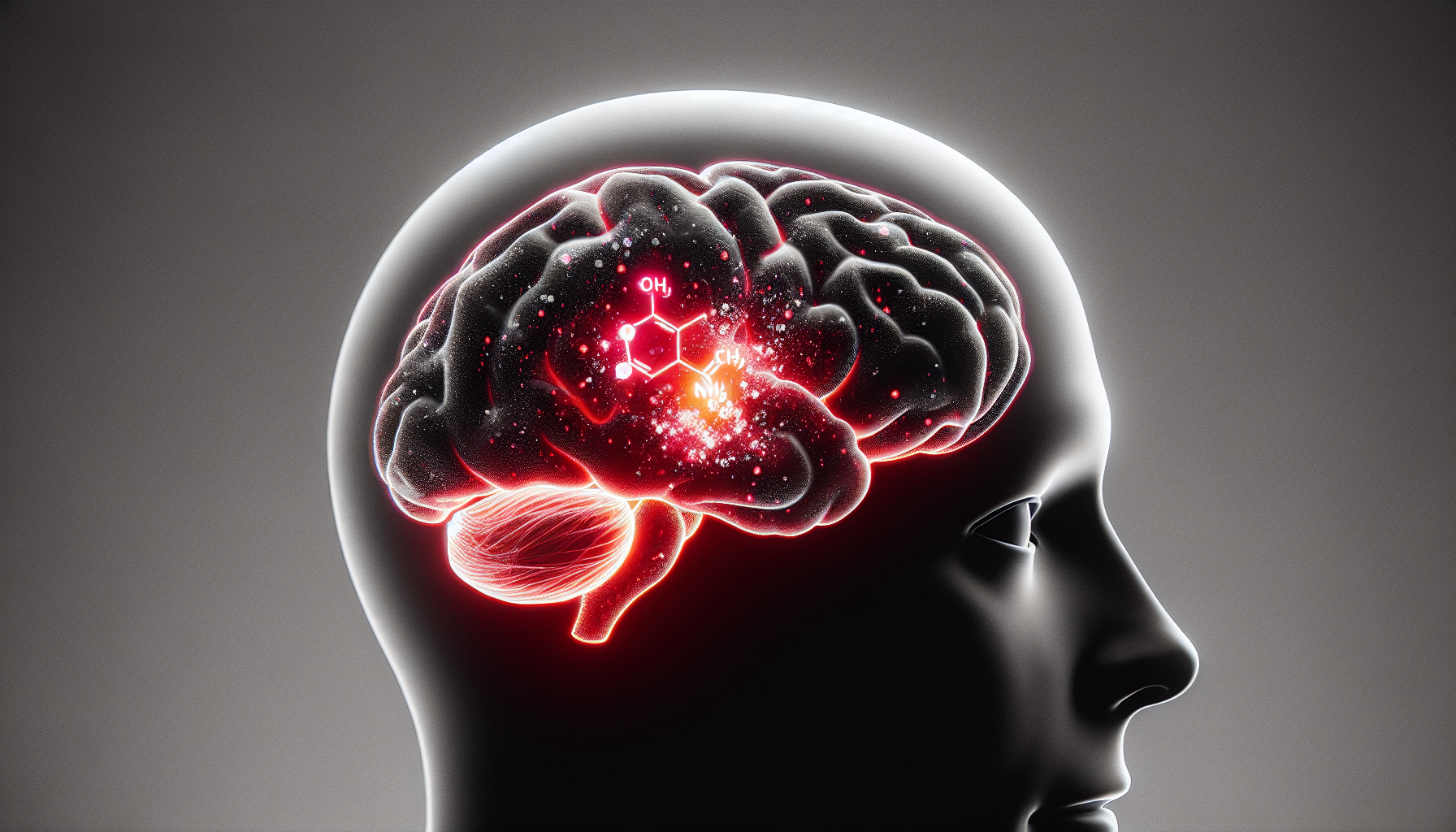Is Ketamine Addictive? Understanding Risks and Seeking Treatment-Resistant Depression

Amar Lunagaria Pharm.D • NiHowdy Founder
Written May 18, 2024
Reviewed by: James Wong Pharm.D • NiHowdy Founder
When it comes to understanding the risks of substance use, clarity is key. So, is ketamine addictive? The short answer is yes. This article dives into the mechanisms behind ketamine's addictive potential, discussing both psychological and physical dependence aspects that are particularly concerning considering its medical origins as an anesthetic. We'll explore tolerance, the nuances of addiction, and the risks associated with chronic use, including the impact on health, social, and professional spheres. If you're looking for detailed answers on how ketamine can lead down a path of addiction and what to do about it, keep reading.
Key Takeaways
Ketamine is addictive, with its potential for psychological and physical dependence characterized by tolerance and withdrawal symptoms, which necessitate increasing doses for the same effect.
Chronic misuse of ketamine can lead to serious health issues, cognitive decline, strained relationships, job performance issues, and social isolation, highlighting the need for professional treatment.
Treatment for ketamine addiction often includes medically supervised detox, therapy and rehabilitation, and aftercare programs to prevent relapse, supported by a strong system of emotional support and lifestyle changes.
Aiming to lead a normal and productive life is crucial for individuals recovering from ketamine addiction, as it represents the ultimate goal of overcoming the addiction’s cognitive impairments and social detachments.
Ketamine’s Addictive Potential

Originally celebrated for its use in medicine as a dissociative anesthetic, ketamine has also garnered attention for its potential in treating conditions such as chronic pain, alongside being known as a recreational drug with addictive potential. Indeed, ketamine possesses qualities that foster both psychological and physical dependence due to the way it alters brain activity related to reward processing especially following administration when there is increased action within pleasure-associated regions such as the nucleus accumbens and putamen. These shifts in how the brain responds to reinforcement are characteristic of addiction's complex nature.
Abuse of ketamine over time typically escalates into an overwhelming urge to experience its unique dissociative effects repeatedly an indicator of psychological reliance on the substance. The disruptive influence that ketamine exerts on cognitive functionality through NMDA receptor interaction exacerbates this risk of dependency. Users face danger from developing tolerance a form of physical dependence which results in diminishing returns regarding the effectiveness of standard doses and often leads individuals down a path towards consuming increasingly larger quantities just to recapture those initial feelings elicited by using ketamine.
Tolerance and Dependence
When individuals use ketamine, their brain's reward system grows less responsive to the drug over time. As a result, to experience the dissociative effects or trance-like state that was once attainable with a smaller dose of ketamine, one must consume ever-larger amounts. This creates an escalating pattern where increased usage leads to heightened tolerance and consequently necessitates even more of the drug to achieve the same desired effect.
This escalation can quickly lead to addiction, as evidenced by withdrawal symptoms when reducing or ceasing ketamine intake. These symptoms may include both psychological manifestations such as depression and anxiety, and physical discomfort which compels users to resume their consumption of ketamine for symptom relief. Addiction thus becomes a precarious balance akin to walking on a tightrope threatening an individual's descent into Dependence on this substance.
Psychological vs. Physical Addiction
Struggling with ketamine addiction involves grappling with both psychological and physiological challenges. The psychological aspect of the addiction manifests as an overpowering mental desire for the drug, fueled by the brain's reward system that continuously seeks out ketamine's pleasurable effects. This is akin to a whisper escalating into an insistent shout within someone ensnared by ketamine's alluring effects.
On the flip side, physical addiction refers to the body developing a dependence on ketamine through its habitual use. While simply building tolerance towards this substance doesn't mean one has become physically addicted, it certainly lays the groundwork for psychological dependence forming an intricate trap from which breaking free becomes progressively harder.
The Consequences of Ketamine Misuse

Ketamine misuse, a form of drug abuse, does not stop at addiction; rather, it triggers a domino effect of consequences that infiltrate all aspects of life. Drug abuse, including ketamine misuse, is influenced by various factors such as environmental influences, peer pressure, psychological factors, family genetics, and the impact of long-term use on the brain’s chemical systems and functions. This dangerous path is littered with the debris of physical and mental health issues and the wreckage of personal and professional relationships. The gravity of these consequences underlines the need for professional intervention and treatment, as the negative repercussions extend beyond the individual to the society at large.
Long-term ketamine use can lead to:
Cognitive decline
Strained relationships
Dwindling job performance
Financial instability
Health problems
Social isolation
Neglect of responsibilities
Abandonment of important social and occupational activities
These consequences paint a bleak portrait of the effects of pharmaceutical ketamine abuse.
Health Risks
Misusing ketamine should be approached with extreme caution due to its significant health risks. In the immediate aftermath of use, individuals may experience a range of physical effects from dissociative states and increased blood pressure to impaired motor function, which can progress into dangerous levels of sedation or even unconsciousness. Over time, this changed. It is the sustained usage that harbors profound dangers. Habitual consumption has been known to induce psychological issues similar to symptoms observed in psychotic disorders such as schizophrenia manifesting as disconnection from reality and vivid hallucinations.
With continued misuse over an extended period, ketamine takes a severe toll on one's body organs, leading to dire consequences like cognitive decline and substantial harm to kidney and liver functions. It also causes serious bladder conditions potentially requiring surgical intervention for resolution. Henceforth, administering ketamine without appropriate medical oversight constitutes taking unnecessary risks with your well-being a gamble heightened when indulged outside the confines of clinically sanctioned environments.
Social and Professional Impact
Ketamine addiction can severely damage one's social and occupational life beyond the physical toll it takes on the body. As this addiction escalates, it starts to overshadow connections with family and friends as well as professional commitments. Individuals struggling with ketamine abuse often become isolated, gravitating towards other users while their world becomes increasingly centered around sustaining their habit.
In terms of career implications, a drop in job performance and consistent neglect of work duties often result from ongoing substance abuse. Persistent ketamine misuse may lead to serious mental health issues such as lasting depression and cognitive impairments related to memory factors that deeply impede an individual's capacity to be productive and successful within society.
Recognizing Ketamine Addiction

Acknowledging the bonds of addiction is the first step on the path to recovery. Identifying an addiction to ketamine requires a comprehensive approach that includes recognizing an increase in drug consumption, observing behavioral shifts, and noting physical symptoms. It involves being aware of how subtly yet progressively ketamine starts dominating more time and resources as someone finds it increasingly difficult to reduce their intake or rebound from its effects.
Ignoring persistent social and relational problems that arise due to the ongoing use of ketamine could be a glaring indication that the addiction is deepening. As soon as this substance begins undermining one's capacity for sustaining relationships, it becomes critical to pursue expert assistance.
Behavioral Changes
Alterations in behavior are a definitive signal of the transformative impact that ketamine addiction can have. Among the noticeable indicators are:
An inability to moderate consumption of the drug, even when faced with severe repercussions
Increasing preoccupation with acquiring and consuming ketamine becomes central to their existence
A tendency towards isolation where interactions predominantly occur with fellow substance abusers
These behaviors strongly suggest an addiction to ketamine.
The decline into such an addicted state is often accompanied by deception and covert conduct as those suffering from the affliction become skilled at hiding their issues with substances, encompassing both drug use and alcohol abuse. These behavioral warning signs should be heeded as urgent cries for help and intervention.
Physical Symptoms
The physical manifestations of ketamine addiction are undeniable and serve as clear indicators of the condition. Those suffering from this addiction may exhibit various symptoms such as:
A sensation akin to an all-encompassing buzz throughout the body
A sense of deep relaxation
In extreme scenarios, individuals might fall into a K-hole, a state marked by accelerated heart rate, respiratory difficulty, and impaired motor functions.
Heavy users often suffer from K cramps', and intense abdominal pain that can be incapacitating.
Detoxification from ketamine presents its own set of formidable challenges. Individuals withdrawing may endure.
Paranoid thoughts
Profound feelings of depression
Emotional instability
-Uncoordinated movement
It is critically important to vigilantly supervise someone undergoing the initial stages of detoxifying from ketamine use due to potential serious implications on both breathing and cardiac rhythm.
Dangers of Mixing Ketamine with Other Substances

Combining ketamine with other substances significantly heightens the danger, leading to unpredictable and life-threatening outcomes. The likelihood of a fatal overdose increases dramatically when this drug is taken alongside prescription drugs, street drugs, or alcohol. This action isn't just risky. It's an intentional plunge into grave danger marked by profound depression of the central nervous system, amnesia, respiratory depression, and impaired cardiac function, possibly resulting in coma and death.
The symptoms associated with a ketamine overdose such as loss of consciousness, vomiting, and convulsions become more probable when mixed with additional substances. With these dangers magnified by the interaction between ketamine and other agents involved in polydrug use the potential consequences are alarming making vigilance and recognition critically important for safety.
Alcohol and Ketamine
Combining ketamine with alcohol can lead to catastrophic outcomes. The merging of these two NMDA receptor antagonists is responsible for the vast majority of overdose deaths related to ketamine in the UK, a grim figure that must be taken seriously. When used together, their inhibitory impacts on the brain intensify.
The simultaneous use of these substances substantially increases the likelihood of experiencing urinary and gastrointestinal issues, compounding an already significant list of adverse health effects. Their interaction doesn't merely accumulate. It creates a synergistic effect resulting in a potent concoction that poses severe risks and has the potential to rapidly become dangerous.
Drug Interactions
Navigating the dangerous landscape of drug interactions, ketamine is a substance that should be used with extreme caution. When combined with other depressant drugs, the user's health can drastically decline, potentially leading to deadly respiratory depression. The dangers are magnified when ketamine is used alongside multiple substances, significantly increasing the likelihood of overdose and death.
Patients must refrain from mixing ketamine with any medications or substances known to induce drowsiness this includes alcohol as well as sleep aids. Emergency department records indicate that nearly 90 percent of cases related to ketamine toxicity also involve additional recreational drugs or alcohol consumption.
Treatment Options for Ketamine Addiction

Addressing ketamine addiction demands a comprehensive treatment strategy, which often includes medically overseen detox as well as extensive rehabilitation efforts. This type of treatment is designed to tackle the complex characteristics of drug addiction, and it frequently covers therapies for concurrent disorders or dependencies on multiple drugs.
A spectrum of therapeutic interventions is available to those struggling with an addiction to ketamine, including inpatient programs that offer a fully supportive environment dedicated to recovery, alongside outpatient options that permit patients the flexibility to uphold some normalcy in their routine activities.
Detoxification Process
Embarking on the path to recovery from an addiction to ketamine begins with detoxification. This critical phase includes:
Clearing ketamine from the system
Oversight by medical professionals during detox
The possibility of encountering complications
Managing withdrawal symptoms is necessary
Due to the risks associated with potential complications and managing those symptoms, detox must occur under medical supervision.
In this stage of withdrawing from ketamine, healthcare providers might administer specific medications in a controlled manner. These drugs help alleviate the more severe withdrawal effects while also ensuring no exposure to additional addictive substances occurs during treatment.
Therapy and Rehabilitation
Behavioral therapies, such as cognitive behavioral therapy, are at the heart of overcoming addiction and are critical in guiding individuals through recovery. Ketamine has shown promise as a valuable player in treating addiction by interrupting harmful neural patterns and mitigating depression, which can boost the effectiveness of psychological interventions.
Sober living settings play an indispensable role in sustaining enduring abstinence from substances like ketamine. They offer a stable and nurturing space that aids people in reconstructing their lives within a substance-free environment.
Preventing Ketamine Addiction Relapse
Overcoming addiction is just the beginning, as maintaining sobriety and preventing relapse becomes the primary objective. Aftercare programs act as critical supports that significantly prolong successful abstention after completing rehab. Ongoing care post-treatment plays an essential role in smoothing out the transition to a life free from ketamine dependence and helps maintain prolonged sobriety.
Incorporating strategies like nurturing a robust support network can be key to thwarting potential relapses. This network may comprise:
Relatives
Acquaintances
Medical professionals
Peer support groups
Such connections can offer moral encouragement, and hands-on help, and foster accountability among individuals who have undergone addiction treatment. Engaging with 12-Step Facilitation. Treatment along with other local group supports can boost social backing in recovery processes, thus promoting sustained engagement and longer-term abstinence.
Support Systems
Recovery is bolstered by the foundational role of support systems, which provide critical emotional reinforcement, hands-on assistance, and a sense of accountability essential for warding off relapse. Participation in 12-step programs or similar groups cultivates robust social bonds and strengthens personal responsibility to resist temptations that may otherwise lead to a setback.
These networks do more than offer fellowship. They also extend practical help with daily tasks such as transportation and shopping for groceries. This aid allows those recovering from addiction to direct their efforts toward healing while minimizing feelings of solitude and detachment. The contribution of family members and friends cannot be overstated alongside self-care practices and understanding addiction their engagement is key to managing triggers that might precipitate a recurrence effectively.
Lifestyle Changes
For individuals recovering from ketamine addiction, it is critical to create a new sense of normalcy. By establishing a well-organized routine, they can foster stability and predictability in their daily lives, laying the groundwork for resuming a normal and productive existence. Engaging regularly in physical activities also plays an essential role by maintaining body fitness and providing a natural means of alleviating stress key factors that reduce the risk of falling back into old habits.
To lead a healthy life goes beyond simply avoiding ketamine. It entails:
Participating in enjoyable pastimes
Developing interests through hobbies
Nurturing relationships that enhance sober living
Acquiring crucial life skills such as managing finances and organizing time
This comprehensive lifestyle change provides those overcoming addiction with the necessary tools for effectively coping with life after breaking free from the grip of substance dependency.
Summary
We have navigated the complex world of ketamine addiction, from its seductive appeal to the harsh consequences it imposes on both mental and physical health. While ketamine has legitimate medical uses, abusing this drug recreationally comes with a heavy cost that includes declining health, damaged relationships, and a reduced quality of life. There is hope. Recovery is possible through appropriate treatment approaches, strong support networks, and positive lifestyle changes.
Consider this an instructive narrative as well as a source of optimism. Those entangled in the web of ketamine addiction should recognize that though challenging, the road to recovery is lined with expert care and empathetic assistance. This path leads toward reclaiming one's life imagining anew what lies ahead and restoring oneself fully.
Frequently Asked Questions
Can ketamine lead to addiction?
Certainly, ketamine addiction can develop as the drug prompts both psychological and physical dependence by engaging the brain s reward system. This interaction often results in tolerance and a driving need to continue using the substance.
What are the signs of ketamine addiction?
If you or someone you know is showing escalating drug use, behavioral changes like loss of control and social withdrawal, as well as physical symptoms such as increased heart rate, difficulty breathing, and severe abdominal pain, it may be a sign of ketamine addiction. Seek help from a healthcare professional as soon as possible.
What are the risks of mixing ketamine with alcohol or other drugs?
Combining ketamine with alcohol or other substances can result in dangerous and unpredictable consequences, elevating the likelihood of an overdose and the possibility of life-threatening respiratory depression.
It is highly recommended to steer clear from using these drugs together.
What treatment options are available for ketamine addiction?
Options for addressing ketamine addiction include a medically monitored withdrawal process, various forms of behavioral therapy, and extensive rehab programs that can be conducted either on an inpatient or outpatient basis.
Professional assistance is crucial when dealing with this form of addiction.
How can relapse be prevented after ketamine addiction treatment?
To mitigate the risk of falling back into ketamine addiction following treatment, engaging in aftercare programs is crucial. Forming a support network and altering one s lifestyle to incorporate structured, healthful activities are vital steps toward maintaining recovery.
These measures play an essential role in diminishing the likelihood of succumbing once again to addiction post-treatment for ketamine dependency.